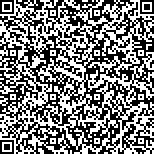下载中心
优秀审稿专家
优秀论文
相关链接
摘要

中国新疆北部古墓葬目标在Google Earth上显示为两大类:一类是斑点型,另一类是圆环型,两类的边界都比较模糊。自动提取这些古墓葬目标比较困难,针对这一问题,提出了一种基于遗传算法局部方向梯度的圆形检测算法。该方法采用局部方向梯度,并且基于计算边缘方向梯度的主分量实现,因此该方法能适用各种边缘特征,遗传算法的加入能够提高在圆形不连贯、多圆相交等情况下圆形自动检测的鲁棒性。本文选取新疆北部作为试验区域,结果表明本文方法与传统的基于霍夫变换的圆形检测算法相比,能适应多特征的圆形边缘,而且不用设定自动检测中的阈值,更加智能化,自动化。
The potential ancient graves in Northern Xinjiang of China almost appear into two types of circular marks: blob and ring marks with the faint boundary contrast on high resolution satellite imagery in Google Earth. In this paper, we proposed a circle detection method based on the local orientation using Genetic Algorithm (GA) to extract them. Ours bases on the local orientation instead of the edge intensity, which was computed by the dominant component of the edge orientation histogram which is robust against varying edge response. In our method, GA was used for robustness of circle detection against the shape disconnectedness, occlusions and other noises. We also used the geometric characteristic of the edge orientations at crossings of two circles to reduce the search space of GA for circle detection. The study was carried out on the unexcavated archaeological sites in the Northern Xinjiang of China. We compared our method to Hough Transform (HT) method as the traditional robust circle detection. The results demonstrate that our method is much more robust against weak edge response and does not incur thresholds that are difficult to adjust automatically.

